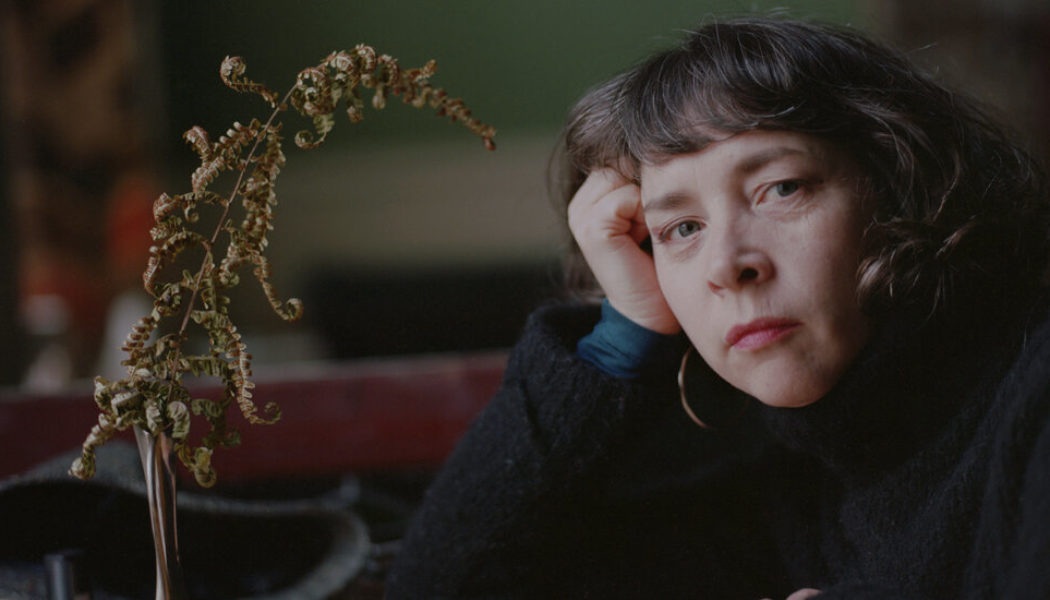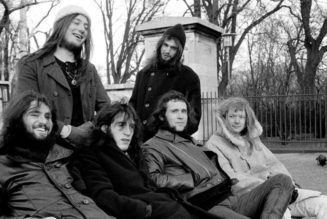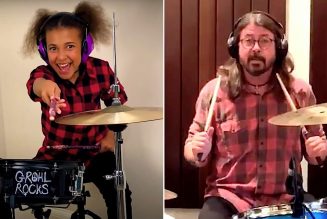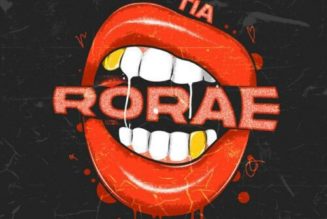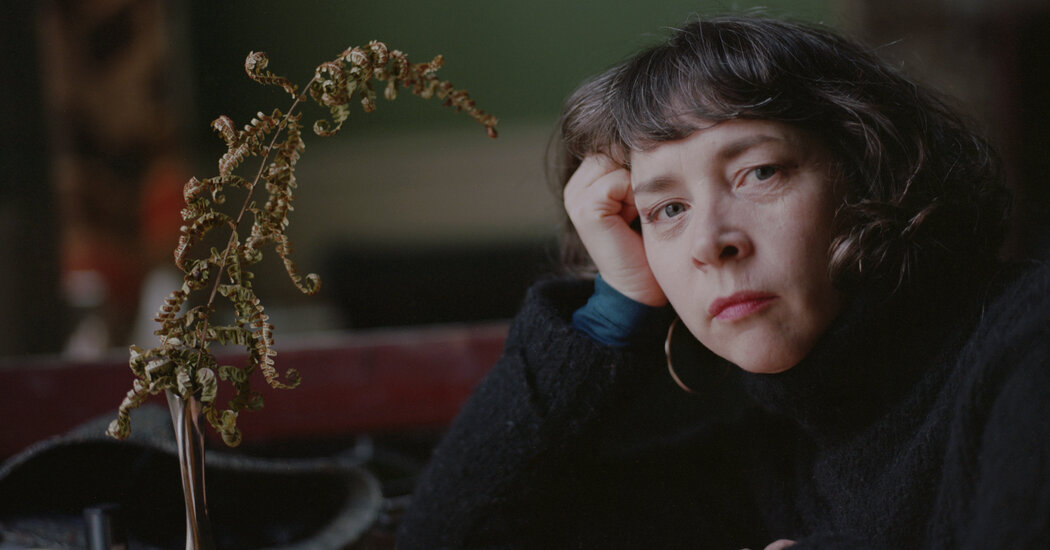
As Ireland reimagines itself, musicians including the singer Lisa O’Neill and the band Lankum are reimagining the island’s music with an ever-growing sense of pride.
DUBLIN — The 40-year-old Irish singer Lisa O’Neill’s north Dublin flat is filled with books, records, instruments and talismanic chachkas. A Sinead O’Connor photo flanks a Johnny Cash portrait on a shelf next to a ceramic teapot; a Patrick Kavanagh poetry collection tops a pile of paperbacks; a Margaret Barry LP jacket gets pride of place on her upright piano’s rack.
Barry was a street singer “discovered” by the folklorist Alan Lomax in the 1950s; she busked with a banjo and a beautiful bray of a voice, brazenly Irish, singing songs of the day alongside traditional ballads. Her work has become a touchstone for O’Neill. “I kind of really learned to sing from these recordings,” she said in an interview in her high-ceilinged kitchen last month. “She was like the Edith Piaf of Ireland.”
O’Neill is a cultural hero in her own right. She has released five albums since 2009, building a reputation as a modern artist tapped into the ancient. In song, her voice becomes a wild thing, cutting the air like the cry of Dublin’s omnipresent sea gulls; it can silence a noisy pub crowd when it lays into a ballad, swooping boldly into high notes or creaking fiercely. She spent Ireland’s strict lockdown largely by herself here in one of the city’s weathered Georgian townhouses, writing the incantatory songs that inform her recent album, “All of This Is Chance,” which was released in February.
“Folk” might not be the best word to describe O’Neill’s striking mix of originals and interpretations, which echo singer-songwriter, alt-country and indie-rock traditions. In this, she is not alone. Over the past decade she has found community and common cause with a Dublin tribe leaning into Ireland’s older traditions.
There’s the sublimely harmonizing brother duo Ye Vagabonds, who opened shows for Phoebe Bridgers last summer; the mighty bass-baritone singer-songwriter John Francis Flynn; Eoghan O Ceannabhain, a master of Irish-language song in the sean nos tradition; and Lankum, a gang of drone-loving experimentalists who have become a lodestar for the scene, and released their fourth album on March 24.
This creative bounty has been echoed in other Irish arts resonating abroad despite — and arguably because of — their rich, resolute Irishness: the TV series “Derry Girls” and “Bad Sisters,” the films “The Quiet Girl (An Cailin Ciuin)” and “The Banshees of Inisherin,” both part of the so-called Green Wave at this year’s Oscars.
All this has coincided with significant sociopolitical change in Ireland. The legalization of abortion and same-sex marriage — alongside the exposure of the horrors inside the religious institutions known as “mother and baby homes” that proliferated until the 1990s — have marked the diminished power of the Roman Catholic Church alongside the greater empowerment of women. Brexit, while further complicating Ireland’s ever-fraught relationship with England, has perhaps sharpened the Irish sense of self.
Lankum’s singer and multi-instrumentalist Radie Peat, 36, sees this cultural churn accompanying a resurgence of interest in Irish folklore and language “with absolutely zero sense of embarrassment,” describing an atmosphere where artists are “confident about their identities as Irish people, and not trying to recreate things they’ve seen done somewhere else.” She credits the abortion and marriage referendums, driven by decisive popular vote, as giving people “a sense of pride.”
Her bandmate Ian Lynch, 42, a singer who plays contributes both uilleann pipes and tape loops, added a clarification. “Not a jingoistic, blinkered sense of pride,” he said. “Not like some right-wing, ‘oh, we’re the best,’ but actually a sense of pride for good reasons.”
The Lankum crew, who often finish each other’s sentences, mulled this notion on a blustery February afternoon at Guerrilla Sound, the workshop of the group’s producer/low-key fifth band member John Murphy, 39, who’s known as Spud. The catacomb studio is stocked with esoteric electronic instruments, some of which shaped the band’s intense, darkly psychedelic new album, “False Lankum.”
The band’s “folk song” approach, which can equally suggest the vast dronescapes of the composer Sarah Davachi and the experimental metal band Sunn O))), appears in microcosm on their nearly nine-minute single “Go Dig My Grave.” Peat’s piercing delivery of the centuries-old “forsaken girl” ballad, which has many variants (“The Butcher Boy,” “Died for Love”), charts a bottomless grief as the track layers instruments alongside other sounds: minor-key hurdy-gurdy notes, steely fiddle harmonics, witch-coven murmurs, potato-chip crunching and the subliminal flicker of Murphy digging holes for tomato plants in his garden.
Spider Stacy, 64, the English musician and actor who exploded the possibilities of Irish traditional music with the Pogues in 1980s and has performed with Lankum, admired the group’s “profound understanding of the possibilities of sound” and “intimate knowledge of their art” in an email exchange. “For me anyway, they surpass pretty much anyone,” he added. “They’re the best band in the world.”
“Go Dig My Grave” is a song Peat had plumbed for years at casual pub sessions, social hubs that remain central to Irish music tradition. The tradition got a boost in the late ’00s, when the financial crisis left young people with more time on their hands than cash. Lankum’s members met at a Dublin session. Diarmuid and Brian Mac Gloinn, of Ye Vagabonds, found a home in them, as did O’Neill. For a time, she and the Mac Gloinns anchored separate nights at Walsh’s, in the north side Stoneybatter neighborhood.
O’Neill sat in on a recent session there, a lively assembly that ran until 1 a.m. and nearly veered into a brawl when a bystander picked up a concertina without asking. A labor-themed sequence included O’Neill’s “Rock the Machine,” about a Dublin dockworker losing his job to automation. Kilian O’Flanagan, a rising talent, sang Ewan MacColl’s “Tunnel Tigers,” about the digging of the London Underground, and Paddy Cummins, taking a night off from his band Skipper’s Alley, delivered “McAlpine’s Fusiliers,” another rueful worker’s tale popularized by 1960s folk revivalists the Dubliners.
The mother ship of Dublin session pubs, however, remains the Cobblestone in nearby Smithfield. In a scenario echoing the 1970s New York punk crucible CBGBs, a dive bar in a rough neighborhood was transformed by a music lover — here, in the late 1980s by Tom Mulligan, who now runs the Cobblestone with his children. Roughly 10 years ago, the bar began hosting “The Night Larry Got Stretched,” a monthly session in the back room aimed at involving younger people in traditional singing. It’s been going strong ever since.
But Dublin has changed. Smithfield became a desirable district, and the Cobblestone was the locus of a civic controversy in 2021, as developers planned to build a hotel on top of it, eliminating the pub’s back room and courtyard. Community protest was swift; petitions circulated, and a media savvy march included musician pallbearers parading a coffin inscribed “RIP Dublin.” The hotel project stalled, and developers withdrew an appeal last year.
The Cobblestone’s cause, like that of the Dublin scene writ large, has been furthered by a dedicated network of culture workers. Filmmakers have been key. Luke McManus is a local who shot a moving clip for Lankum’s 2016 breakthrough single, “Cold Old Fire,” gratis; his new documentary, “North Circular Road,” is a musical love letter to hardscrabble North Dublin. “Song of Granite,” Pat Collins’ haunted 2017 biopic of the sean nos legend Joe Heaney, featured vivid performances by O’Neill and Damien Dempsey, the north side singer-songwriter who just completed a run of his “Springsteen on Broadway”-style “Tales From Holywell” at the venerable Abbey Theater. The filmmaker and musician Myles O’Reilly, possibly the hardest-working man in Irish trad, maintains a YouTube Channel that’s a master course in how to present, preserve and promote a nascent music scene.
Imaginative boutique festivals (Quiet Lights in Cork, Roise Rua on the island of Arranmore) have helped, too, as well as the Irish Arts Council’s traditional arts arm, who have lent support in spite of grumbling from some folk music old-schoolers skeptical of the current scene.
Perhaps the biggest boost to international outreach has been the attention of Rough Trade Records, founded by Geoff Travis; the label was known for signing post-punk acts like the Smiths and the Raincoats in the 1980s. The label’s co-owner Jeannette Lee sharpened her appreciation of traditional music touring with Public Image Limited, whose frontman, John Lydon, liked blasting Irish folk alongside dub reggae in its van. She started the folk-adjacent River Lea label with Geoff Travis as, in his words, “a labor of love, to a degree,” but also as a proving ground for young artists. Flynn, Ye Vagabonds and O’Neill debuted on River Lea; with a growing audience, her latest album was issued on Rough Trade proper.
While the tide of interest is lifting many boats, no one’s getting especially rich. Ian Lynch felt so priced out of Dublin’s ballooning housing market, he moved back in with his parents. (“I get to see them, which is good,” he said. “But, I mean, I’m 42.”) Side hustles help. Along with lecturing on Irish folklore, Lynch produces “Fire Draw Near,” a fascinating and often very funny Patreon-funded podcast devoted to modern and historic Irish traditional music. O’Reilly supports his video work in part via Patreon, too, with enough success that he can often film emerging musicians without charge, helping grow the scene.
O’Neill, one of the first musicians O’Reilly ever filmed, back in 2010, is an object lesson in how the collective work bears fruit. She quit her barista job at Bewley’s, the famous Grafton Street tearoom, and after years of shares, was finally able to get a flat of her own. Her February album release concert at the town hall in Cavan — her hometown, roughly a 90-minute drive from Dublin — felt like the homecoming it was. On a stage made homey with vintage table lamps, guest artists came and went as old songs flanked new, and the show ended on a spectacular, dissonance-spiked version of “All the Tired Horses,” her remarkable Bob Dylan cover that recently capped the popular period crime drama “Peaky Blinders.”
Afterward, naturally, a session bubbled up, in the lobby of a small hotel down the road. O’Neill’s father ferried in rounds of Guinness from the pub next door. A young man spoke of health struggles, and beautifully sang “The Lakes of Pontchartrain.” The Corkonian legend John Spillane, a national treasure who is something of Ireland’s John Prine, reprised an earlier onstage duet with O’Neill on his aching “Passage West,” then laid into the raucous WWI lament “Salonika,” with hearty accompaniment from the novelist Patrick McCabe, a friend and fan of O’Neill’s who came in for the show.
And on it went until sometime after 3 a.m., when the holdouts finally called it a night.
